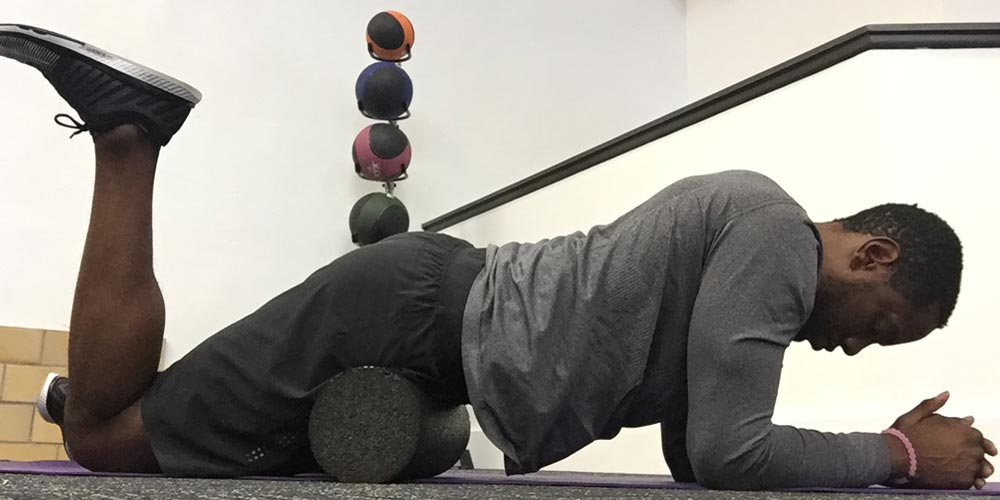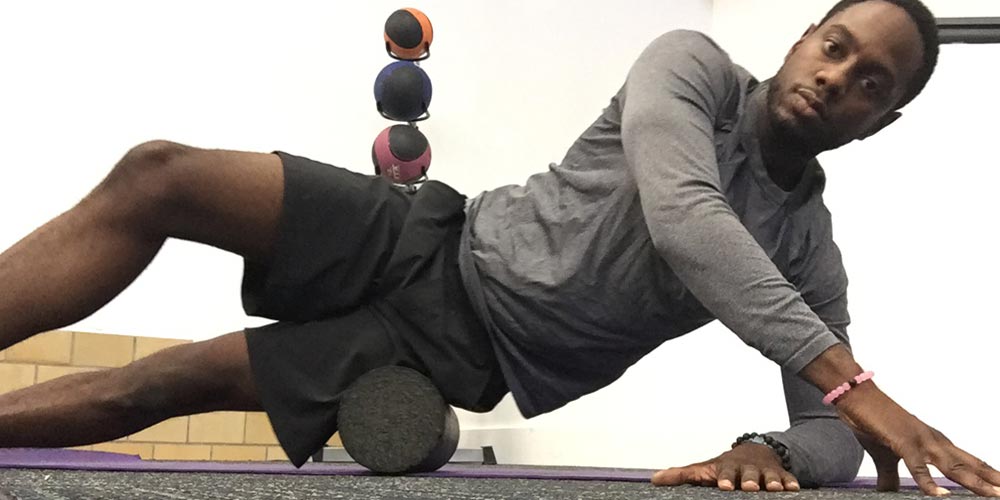First, lets look at how to foam roll properly. The biggest mistake when foam rolling is just rolling back and forth too quickly. Foam rolling is a slow process that should be held on a "knot" or adhesion for 90 seconds to help dissipate the "knots" or adhesions.

Foam Roll-Calves
A lot of injuries and tightness throughout the body can be associated with calf or Achilles tightness. For example, when the calves and hips are tight then the knee could take much of the impact that could lead to knee issues.
How to foam roll the calves: Starting at the ankle, keep one foot on top of the roller and move it side to side and back and forth. This is a like a kneading process. Once you find a "knot" or adhesion, stay on it for 90 seconds. You would keep doing this up the leg until your get to the knee.

Foam Roll-Hip Flexors/Tensor Fascia Late (TFL)
Tight hips can be one of the main causes of lower back tightness. Foam rolling the front of the hips (near the pocket).
How to foam roll the hip flexors/TFL: Lying on the foam roller face down with one leg, slowly roll until you find a "knot" or adhesion. Stay on in for 90 seconds and move on to the next spot.

Foam Roll- IT Bands (Ilio tibial tract)
IT band syndrome is one of the most common injuries in the leg. The IT Bands also can attribute to back tightness and knee pain.
How to foam roll the IT Bands: Starting at the hip, lying on the side of your leg. Slowly roll down until you find the "knot" or adhesion and stay on it for 90 seconds.
Jason Williams has been a personal trainer, pilates instructor, and wellness coach for over 13 years. He is a graduate from Lynchburg College in Virginia with a bachelor of science degree in Sports Medicine; while at Lynchburg College he was a 1st team All-Conference Track and Field Athlete. Jason has worked with a wide variety of clientele, from kids, professional athletes, seniors and special populations. He wrote a children's health and fitness book, The Adventures of Frankie Fitness, which motivates kids and adults to live a healthy lifestyle. He currently works at The Maryland Athletic Club in Baltimore, Maryland.

